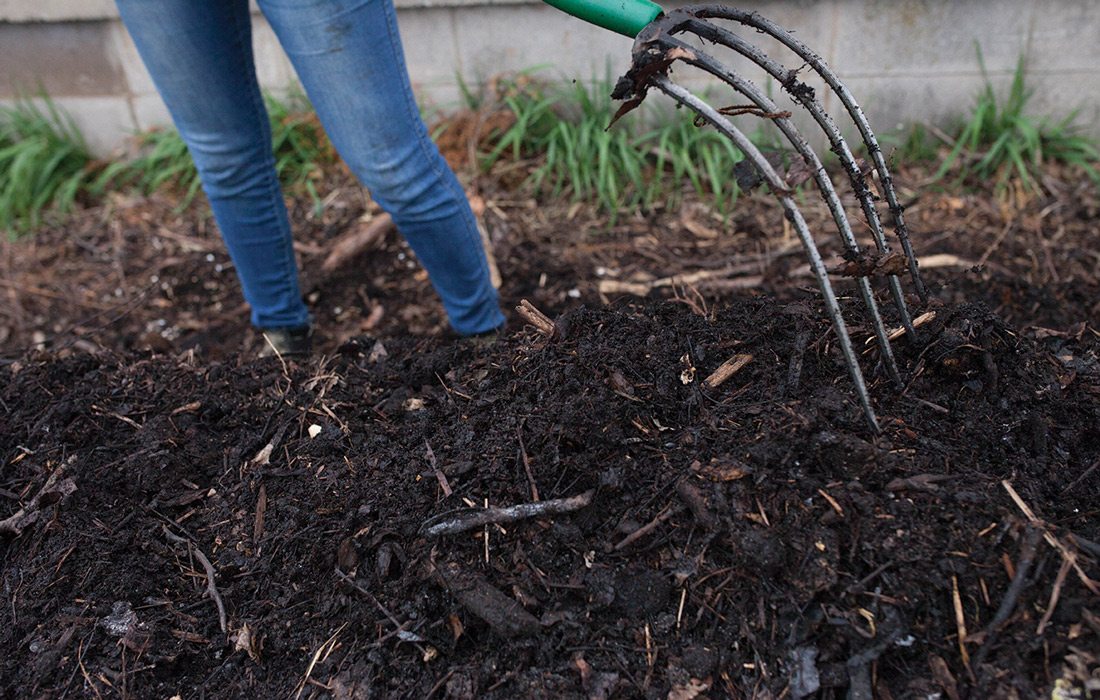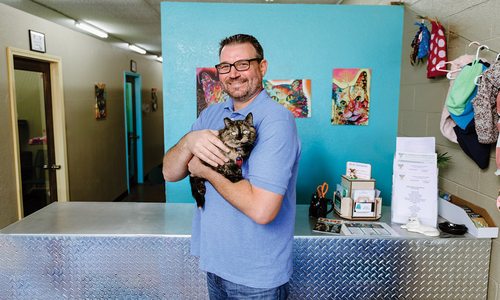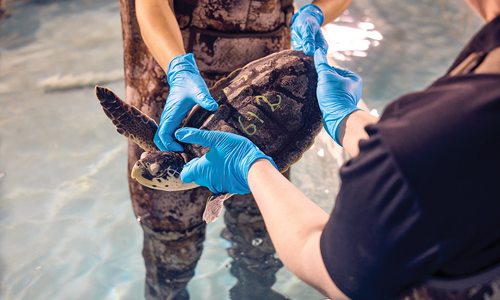
Life
How You Can Help with Springfield, Missouri's Food Waste
Everyone in Springfield, Missouri disposes five pounds of food a week, on average. Here’s how two organizations are addressing a problem with no time to waste.
By Ren Bishop
Apr 2024

Standing in the Springfield landfill, Ashley Krug watches as a truck pours out a full load of one item: hot sauce. “I give tours all the time, but when you see a full load of a perfectly usable food item, it just hurts,” she says. “There are too many hungry people in our community for our landfill to be full of food scraps.”
Giving tours of the Springfield Landfill is one of many ways The City of Springfield educates the community about local sustainability practices. As market and sustainability coordinator for the City, Krug leads a team who works to find new ways to divert used items from disposal.
And each year, 30,000 to 40,000 tons of food scraps end up in the Ozarks’ largest landfill—most potentially generating methane, most able to be composted.
Across southwest Missouri, citizens, municipalities and nonprofits are addressing the food waste issue with innovative solutions. Two passionate composters share how.
In 2018, Springfield Compost Collective was founded on the idea that everyone can do something to positively impact the environment. Justine Campbell co-founded the nonprofit with a group of passionate Springfieldians who were looking for a practical way to address global warming, she says.
“Food waste is a crisis across the globe, with more greenhouse gasses produced from food scraps producing methane in the landfill than the emissions of driving cars,” she says. “But it’s also something that I could try to tackle and create a solution for in our community. Not driving a car feels daunting, but collecting and picking up food scraps, that was something we could do.”
In 2018, a handful of businesses signed on to have their food scraps picked up once a week and then turned into compost. But as interest grew, so did the Collective’s impact. In 2019, the Collective launched a residential pick-up service, picking up any food scraps from homeowners across the community for a $25 monthly fee.
Residential pick-up service includes a bucket, a liner, pickup and drop off, as well as experts who ensure that fruit, vegetables, dairy and meat are composted properly.
The Collective picks up scraps from offices, apartments and restaurants, too. But more than anything, pick-up service ensures no scraps are wasted.
“We really want to move away from the term waste in general,” Campbell says. “There are very few things that we want to waste and put into the landfill. Gathering your food scraps isn’t just composting, it’s a step to slow down and acknowledge what you can do to ensure that you’re not wasting something that could have another purpose, one step closer to closing the food loop and working toward a more regenerative community.”
Since the 1990s, the City of Springfield has been composting yard waste. But in the past decade, the City has led a three-tiered approach to address food waste in the Ozarks. The first approach is maybe the most obvious, but has the largest goal: awareness. The City has a team of six educators who make more than 200 presentations a year, sharing how citizens can reduce food waste through prevention.
Workshops on expiration dates, how to properly store food, meal planning, intentional grocery shopping tips and strategies for using every leftover in the fridge are key elements to this important work, says Krug.
“I think a lot of people don’t know the best ways to utilize and store food in their own homes,” she says. “When we put cilantro in water in our fridge, that makes it last so much longer so it can be used longer. Being more intentional with the food we purchase can ensure it doesn’t go to waste in the first place.”Another way to reduce food waste is through what composters call food rescue, or ensuring that edible food can be eaten by hungry individuals.
Through partnerships with Ozarks Food Harvest, local farms, grocery stores and businesses are encouraged to donate edible food to those in need. “More than 26 percent of Greene County residents face food insecurity, many of which are children. Throwing away food that is still good to eat is unacceptable,” says Krug.
And for the true food scraps, there’s a process and a promise: Dish to Dirt. The City of Springfield’s Food Scraps Drop-Off Pilot program features residential food scrap drop-off containers at all three Springfield Recycling Centers. There, participants can compost anything scraped off a plate to then be turned into rich, locally produced compost.
“Our food scraps program is the most impactful way we can address food waste most directly,” she says. “Everyone eats, and everyone can drop off their food scraps. Everyone can make a difference when it comes to climate change. This is something everyone can do.”
5 Tips For Composting At Home
1. Begin with a goal to compost only fruits and vegetables. By starting small, you’ll develop a rhythm and routine that is truly sustainable. “Fruits and vegetables are the most basic of foods to compost, so they’re the best place to start,” says Justine Campbell, co-founder of Springfield Compost Collective.
2. Place a bowl on your countertop for everyday food scraps. This bowl doesn’t have to be specific for composting, it just has to be seen. “The idea is that if your bowl is visible, then you have a physical reminder to put your scraps somewhere intentional,” says Campbell.
3. Take those scraps to a free community composting bin or have them picked up by Springfield Compost Collective. More than 70 homes and 18 businesses in the Springfield area have their compost buckets picked up each week by the Collective.
4. As your composting routine grows, so should your knowledge. Learn what can and cannot be composted and how by watching videos on the Springfield Community Gardens’ YouTube Channel or attend a workshop by the Springfield Composting Collective. “Anything that comes from the earth is made to be recycled and go back to the earth, but learning how is the key,” says Campbell.
5. Develop a mindset of composting in your everyday life by seeking out compostable materials away from home. “When you’re chopping an onion, having a bowl on your countertop where your onion peel goes helps you be mindful of where the food scraps go,” says Campbell. “Make composting visible to those around you instead of trash that’s hidden.”











